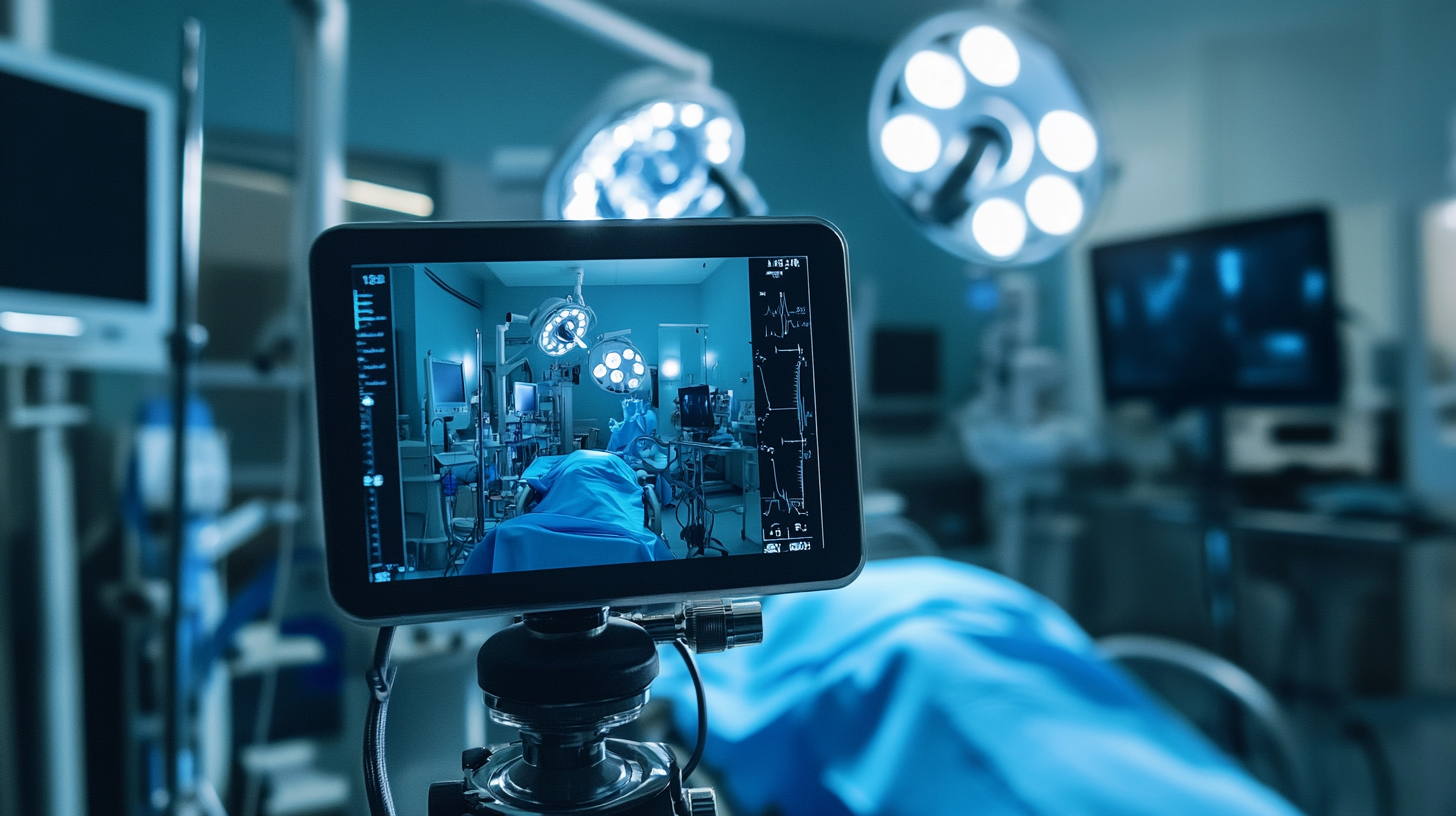Navigating Tariff Challenges How Best Borescope Endoscope from China Thrives in a Competitive Market
In recent years, the medical device industry has seen significant growth, with the global endoscope market projected to reach USD 41.9 billion by 2025, according to a recent report by Grand View Research. Amidst the competitive landscape, Borescope Endoscope manufacturers in China are defying challenges posed by imposed tariffs and trade tensions between the U.S. and China. The U.S. has applied tariffs on a variety of medical devices, including advanced Borescope Endoscopes, but Chinese manufacturers have leveraged cost-effective production, technological innovation, and a deep understanding of market demands to thrive. Notably, the demand for Borescope Endoscopes, crucial for minimally invasive procedures, is accelerating, further solidifying China's position in this niche market. As the industry grapples with fluctuations in supply chains and regulatory scrutiny, China's ability to adapt and meet quality standards presents a compelling case for growth, even in adversarial trading conditions.

Strategies for Thriving Amidst U.S.-China Tariff Policies
Navigating the complexities of U.S.-China tariff policies is crucial for companies in the competitive market of borescopes and endoscopes. As tariffs fluctuate, Chinese manufacturers must adopt agile strategies to remain competitive. Focusing on innovation and quality can help businesses differentiate their products, allowing them to justify pricing despite increased manufacturing costs due to tariffs. By investing in advanced technology and enhancing customer service, companies can foster loyalty and attract new clients.
Moreover, building strong partnerships with U.S. distributors can create a more robust supply chain that mitigates the impacts of tariffs. Establishing local warehousing and distribution centers not only reduces shipping times but also lowers costs associated with tariffs, ultimately benefiting the bottom line. Engaging in effective communication with customers about the benefits of their products—emphasizing superior features or after-sales support—can also help retain market share. By leveraging these strategies, Chinese manufacturers in the endoscope and borescope industry can navigate tariff challenges while thriving in a competitive landscape.
Navigating Tariff Challenges: Borescope and Endoscope Market Distribution in the U.S.
Understanding the Impact of Tariffs on the Borescope and Endoscope Market
The tariffication landscape has become increasingly complex for the borescope and endoscope market, especially as more players emerge in this competitive arena. Understanding the subtle dynamics of tariffs is critical for companies looking to thrive. The introduction of tariffs can create a ripple effect, impacting pricing strategies and market entry plans for manufacturers from China. Companies must navigate these challenges with agility, adapting their business models to survive and flourish amidst heightened costs and supply chain interruptions.
Amidst these challenges, the Global Gastrointestinal Endoscopy Devices Market is expected to reach a remarkable USD 21,413.4 million by 2033, growing at a CAGR of 5.8%. This anticipated growth reflects not only a robust demand for innovative medical solutions but also highlights the resilience of the market, which continues to expand despite tariff-related obstacles. To capture this opportunity, businesses must leverage strategic partnerships and invest in research and development, ensuring they stay ahead of market trends and continue to meet evolving consumer needs.
Navigating Tariff Challenges: How Best Borescope Endoscope from China Thrives in a Competitive Market
| Product Type | Average Price (USD) | Market Share (%) | Impact of Tariffs (%) | Growth Rate (2023) |
|---|---|---|---|---|
| Borescope | $2,500 | 30% | 15% | 8% |
| Endoscope | $3,000 | 25% | 10% | 7% |
| Portable Endoscope | $1,800 | 20% | 5% | 12% |
| Industrial Endoscope | $3,500 | 15% | 20% | 5% |
Innovative Approaches to Production and Cost Management in China
In the competitive landscape of medical instrumentation, particularly in the production of borescopes and endoscopes, Chinese manufacturers are turning to innovative approaches to enhance production efficiency and manage costs effectively. According to a recent report from MarketsandMarkets, the global endoscope market is projected to reach USD 30.6 billion by 2026, growing at a CAGR of 6.4%. This surge presents both opportunities and challenges for Chinese producers as they seek to maintain market share amidst rising tariffs and operational costs.
One effective strategy has been the adoption of advanced manufacturing technologies such as automation and artificial intelligence. By investing in smart manufacturing solutions, companies can significantly streamline their production processes, reducing labor costs and increasing output quality. For example, a study by McKinsey reported that companies employing automation can increase their productivity by up to 30%. Moreover, utilizing data analytics enables manufacturers to optimize supply chains, minimize waste, and achieve faster turnaround times, all critical factors in a highly competitive market.
Additionally, cost management techniques such as just-in-time (JIT) inventory and lean manufacturing principles have gained traction in Chinese production facilities. These methodologies help minimize excess inventory and improve cash flow, allowing companies to navigate the pressures of fluctuating tariffs effectively. A report from Deloitte indicates that organizations implementing lean practices can improve their operational efficiency by 20-30%. As Chinese manufacturers continue to innovate in production and cost management, they are well-positioned to thrive in the dynamic global market for medical devices.
Navigating Tariff Challenges: Borescope & Endoscope Production in China
This bar chart illustrates the production volume of borescope and endoscope technologies in China over the past five years, highlighting the impact of tariff changes and innovative production strategies on growth.
Building Strong Global Partnerships to Enhance Market Reach
In the competitive landscape of medical devices, particularly in the borescope and endoscope markets, building strong global partnerships has become imperative for Chinese manufacturers. According to a report by Grand View Research, the global endoscope market is projected to reach USD 37.7 billion by 2027, growing at a CAGR of 5.2%. This growth presents significant opportunities for companies that can effectively collaborate with international stakeholders, ranging from suppliers to healthcare institutions. By leveraging these partnerships, manufacturers not only enhance their market presence but also gain valuable insights into diverse customer needs and regulatory environments across different regions.
Moreover, partnerships can facilitate access to advanced technologies and innovative practices. For instance, a research analysis by MarketsandMarkets highlights that strategic collaborations in the healthcare sector can reduce development costs by up to 30% while accelerating time-to-market for new devices. As Chinese borescope and endoscope manufacturers navigate tariff challenges and competitive pressures, fostering robust relationships with global partners becomes a strategic necessity. This collaborative approach enables them to cultivate a strong foothold in international markets, ensuring sustained growth and enhanced product offerings aligned with market demands.

Leveraging Technology and Quality for Competitive Advantage in Exporting
In the dynamic landscape of medical device exports, particularly in the borescope and endoscope sectors, leveraging technology and quality becomes paramount for manufacturers in China to maintain a competitive edge. According to a recent report by Markets and Markets, the global endoscope market is projected to reach USD 37.6 billion by 2027, growing at a CAGR of 6.8%. This growth highlights the increasing demand for high-quality imaging products and the necessity for companies to invest in advanced technologies to meet rigorous quality standards and performance benchmarks.
Chinese manufacturers are responding to these demands by integrating innovative technologies into their production processes, such as enhanced imaging capabilities and ergonomic designs. A study by Grand View Research indicates that the demand for endoscopes with improved functionalities, such as 3D imaging and minimally invasive procedures, is driving market growth. By focusing on superior quality and leveraging advancements in technology, Chinese suppliers can not only comply with international safety regulations but also differentiate themselves in a crowded market, thus enhancing their export potential and market share.


